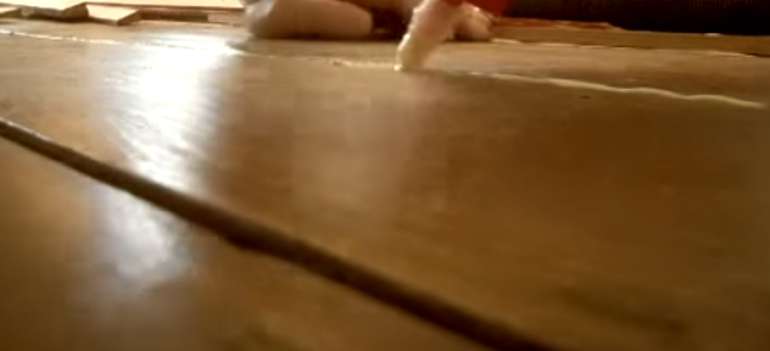Wood floors are a beautiful addition to your home that can truly withstand the test of time. They create a sense of value in any upscale home, but you might start to notice some small issues with them over time. Particularly during dry seasons like winter, you might notice that there are some gaps between the boards. Many people wonder what they need to do to correct this issue. What is the best way to go about filling gaps in old wood floors?
Dust and dirt can easily become trapped in the spaces between boards. This is a problem that most homeowners want to solve rather quickly once they notice it. Here are a few tips for you to consider before you get started.
What Causes Gaps in Hardwood Floors?
The first thing you need to do is understand where the gaps in your hardwood originated. There are some simple things you can do to prevent this issue from ever occurring. In fact, some of these suggestions may even undo gaps in the wood that have already been created.
Wood is a hygroscopic material, meaning that it absorbs moisture from the air around it. During the warm and humid months of summer, you are not likely to see gaps in your wood floors. The planks swell and stick together. In fact, you may even see the opposite problem in summertime, where they become cupped in an attempt to push away from moisture.
Wintertime is a different story. The humidity levels in the airdrop dramatically as the furnace continues to run. The air absorbs what is left of the water in your wood, and the boards shrink down. As a result, you are left with gaps between the boards.
If you notice the problem soon enough, you can often correct it by simply installing a humidifier in the affected area. This restores moisture to the air and subsequently to your wood floors.
Filling Large Gaps in Old Wood Floors
If you cannot fix the problem by installing a humidifier, you may need to take more drastic action when it comes to filling wide gaps. There are many different ways to go about correcting this type of issue, but we will dive into the most common.

Using caulk or silicon is often the fastest way to restore some semblance of normal to your gorgeous hardwood floors.
- The first thing you need to do before filling gaps with silicon in old wood floors is to get them as clean as possible. This means taking a vacuum to the floor and using the attachments to get all of the dirt out from between the boards. Without a clean slate, your caulk or silicon will not adhere properly, and you will have major issues down the road.
- Now, you will need to get ready to fill those gaps with your materials. Cut the tip off the tube of caulk with a utility knife, but make sure to cut at an angle. It should help the filler to go in between the boards a bit more evenly. Before you begin filling gaps in old wood floors with caulk, make sure you have properly inserted the tube into a standard caulk gun.
- Now you are ready to actually correct the gaps in your hardwood floor. Set the angled tip of the tube into the gap and pull the trigger. Drag the tube along the length of the affected area, releasing pressure only when you have reached the end or have corrected the problem.
- When finished, smooth out the area that you just caulked by dragging a plastic or rubber trimmer to remove your excess filler.
This should effectively take care of the issue, but you may want to sand the entire floor to make it smooth. Sanding it and refinishing it is also a great way to make a lively update to the rest of your home. You can stain it or leave it with a natural polyurethane finish.
Keep in mind that if the wood swells up again, the wood filler you just added may crack and come out of place. Try to keep the humidity levels in your home consistent to avoid this outcome.
A Quick DIY Approach
While you can certainly hire a professional to walk you through the process, filling gaps in old wood floors doesn’t have to be difficult. Depending on the severity of the issue, it may be extremely time-consuming, though.
Try to repair the floor by restoring humidity to your home, especially if this seems to be a seasonal issue instead of a permanent one. It can save you a lot of time, effort, and materials. However, this method should work for you if the problem is a bit more permanent.
- How to Cut Lexan - September 25, 2020
- Mineral Spirits vs. Mineral Oil - September 25, 2020
- Shellac vs. Polyurethane - September 24, 2020
